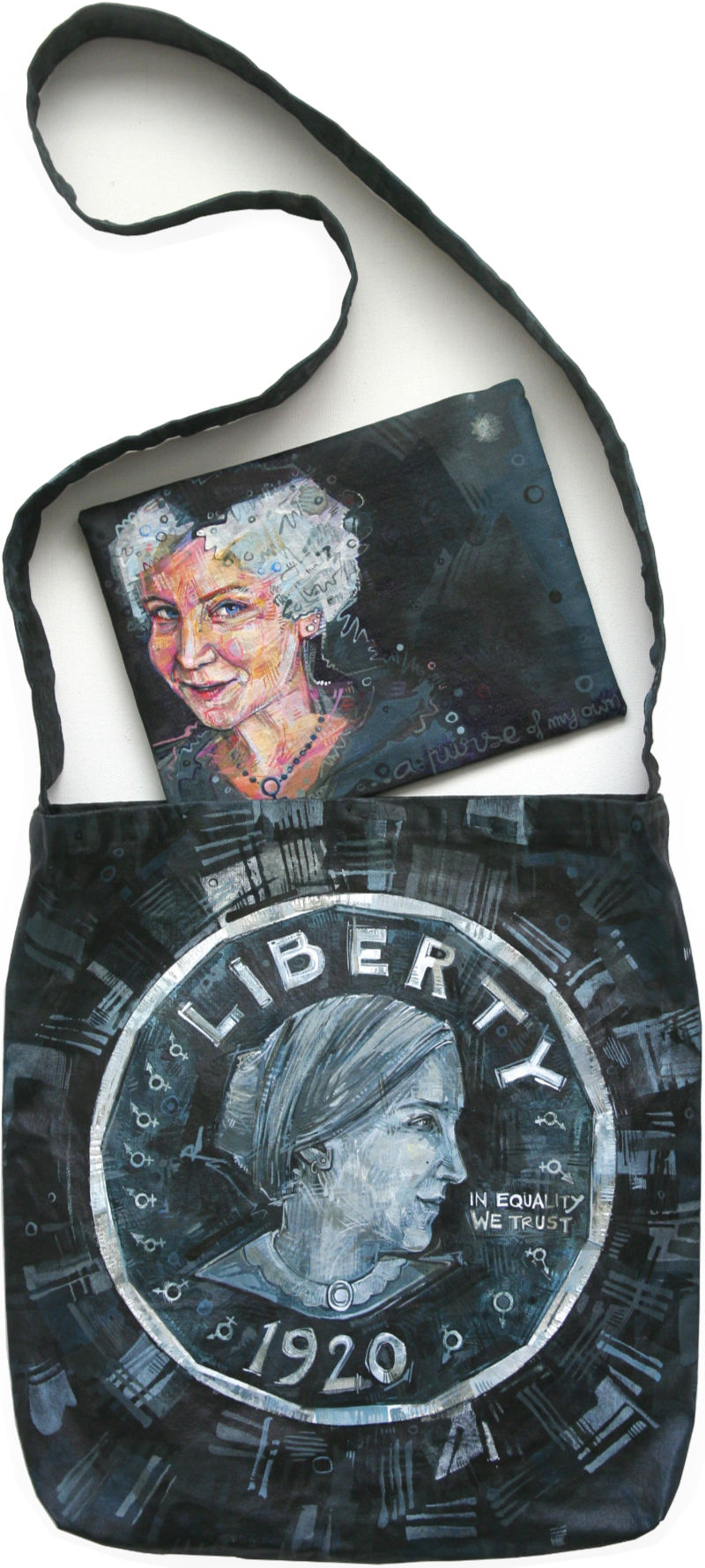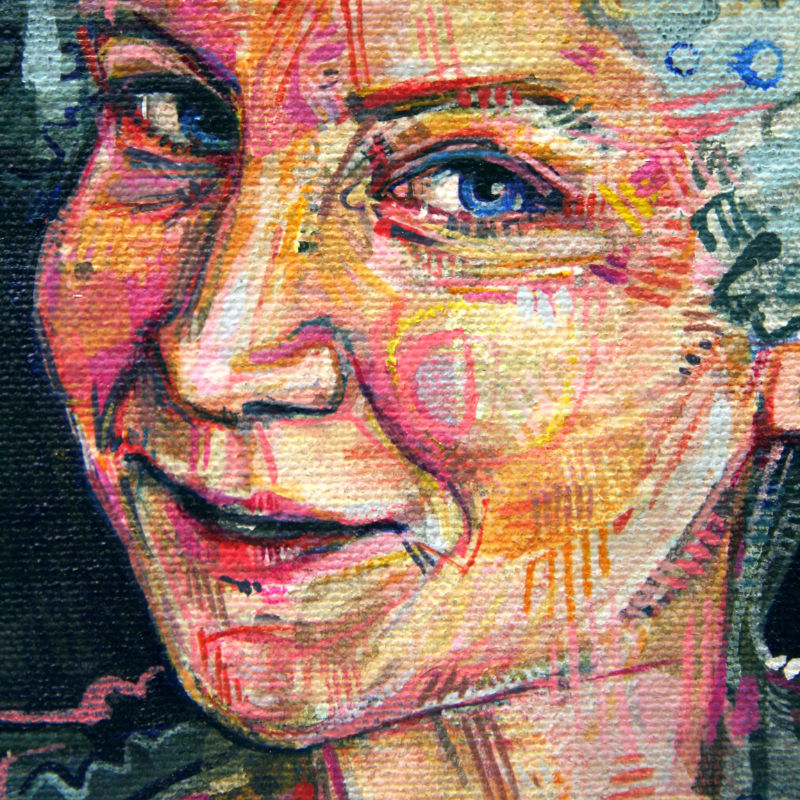Artwork / Archives / Apple Pie / The Declarer and the Susan B (Anglo-American, Alexandra)

The Declarer and the Susan B (Anglo-American, Alexandra)
2008
acrylic on canvas bags
37 x 15 x 2 inches
I asked each of the participants in Apple Pie to write something about what it means to be an American. This is Alexandra’s response.
Most Americans wear their citizenship proudly on their sleeve (or lapel, or T-Shirt, or bumper sticker), boasting to anyone that will listen that everything they say, do, or believe is automatically better, simply because of their nationality. They did not have my grandmother. Haughty, proper, and unwaveringly British, she placed my sister and I under a microscope simply because her daughter had had the audacity to have children in America. Our accents, hobbies, and of course, table manners were all weaknesses and opportunities for improvement. Everything we said, did, or believed was automatically flawed, simply because of our nationality.
This is, of course, an extreme example of British pride, but it was part of my upbringing. My parents weren’t nearly so staid, they were willing immigrants who embraced much of what America and in particular, California, had to offer. Even so, when you put a normal American childhood through a British lens, you learn to question everything our culture agrees is “normal.” Halloween, sleep-away camp, football games, drive-thru’s, the prom—it all led to long dinner conversations and bargaining. “But Mom, the boy pays for the tickets and the girl pays for pictures!” Just as often it was really cool to have parents from another culture—even more holidays and traditions to practice. Pancake parties, Christmas crackers, alcohol when you are 15—that part rocked.
Through the ups and downs, being raised as a first-generation American taught me not to take our customs for granted, but to question everything. A school fundraiser could be the catalyst for a family discussion of educational policy in the US and Europe and the strengths and weaknesses of each. It taught me that participating in citizenship by voting or performing a jury duty is a privilege, not a burden, as my dad only had a green card for much of my life. (I also spent much of my childhood thinking that women were the voters in society and men just watched election coverage for fun.) Most of all, it taught me that we are not the “greatest nation.” Every nation and culture on Earth has something to be proud of, and we can learn from them if only we put our national pride aside. Immigration has the potential to expand America’s culture and consciousness with a wide variety of perspectives, and I am proud to be a part of that promise.
When I met with Alexandra to photograph and interview her for Apple Pie, she told me that she wanted to embody Susan B Anthony. At the time, I thought that the immigrant/icon combinations should to be startling—like a Vietnamese-American Uncle Sam or a Mexican-American Superman. Making a contemporary Anglo-American woman into a 19th century white lady didn’t seem like enough of a remix. Until I remembered Elizabeth Cady Stanton.
Though Anthony’s equal partner in the women’s suffrage movement, today Stanton is the lesser known of the two women. She may have officially kicked everything off with her Declaration of Sentiments at the Seneca Falls Convention in 1848, but Stanton does not cut as dashing of a figure as Anthony when viewed through the filters of the modern American. Both Anthony and Stanton came to women’s suffrage from an abolitionist background, but Stanton betrayed her activist origins when Black men were given the vote before women of any color in 1870 with the 15th Amendment, and she began calling for educational requirements for voter eligibility. This dangerous elitism probably reflected more her own disappointment than any real animosity towards emancipated slaves, immigrants, and other less privileged groups, but it’s nevertheless not what we want to see when we look at the women’s suffrage movement.
It’s for that reason that I made The Declarer—or Alexandra-as-Stanton in the form of a clutch handbag. It’s a kind of purse which is often paired with a bigger day bag and even lives in the larger purse, only to be brought out for a quick errand or an evening out. The Susan B is Alexandra-as-Anthony in the form of a more practical bag, and it’s the perfect match for the Stanton clutch since Anthony is the more presentable half of the partnership.
